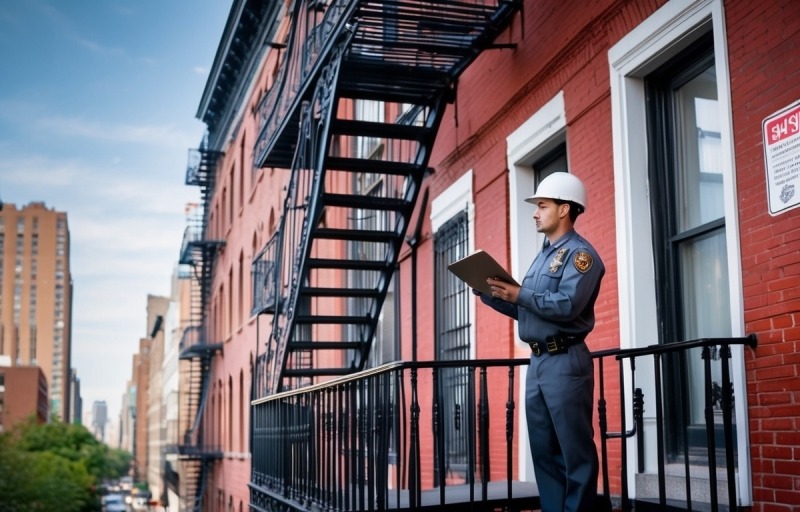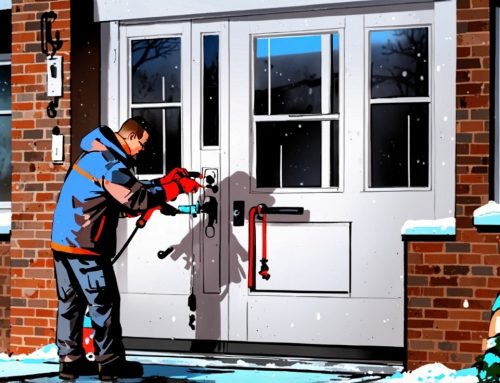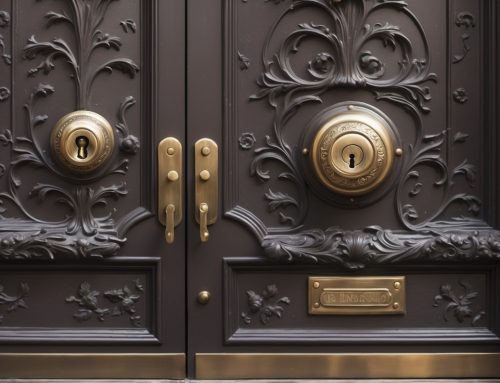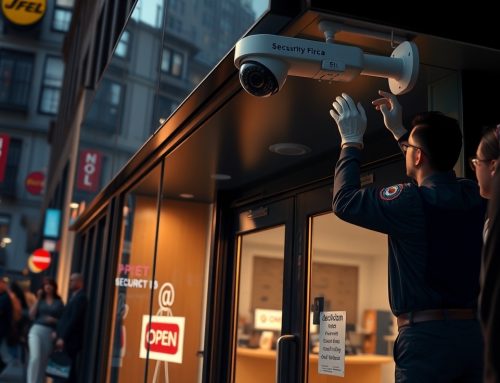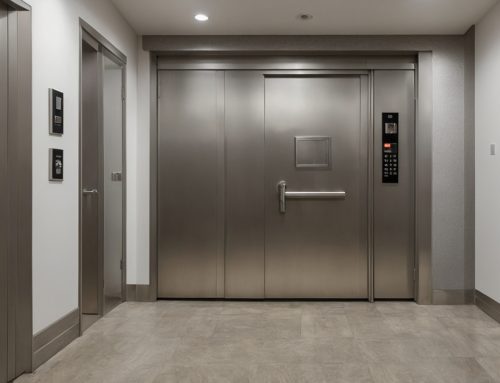How to Secure Your NYC Apartment Fire Escape — have you ever wondered if your fire escape is truly safe? In a city like New York, where space is tight and buildings are old, fire escapes often double as storage or even backdoor entry points. That’s why securing them isn’t just smart — it’s essential. At iLocksmiths, we’ve spent over 11 years helping NYC residents protect their homes with fast, reliable, and 24/7 locksmith services.
The best way to secure your NYC apartment fire escape is by installing high-security window gates, tamper-proof locks, and motion-sensor lighting. This article breaks it down for you: from choosing the right lock system to understanding NYC fire code regulations. We also cover expert tips on preventing unauthorized access while keeping your emergency exit functional.
But that’s just the beginning. Security expert and former NYPD officer John McDevitt says, “Most break-ins in NYC happen through unsecured windows and fire escapes.” So, if you’re serious about protecting your home, let’s dive into the smartest and safest ways to secure your fire escape — before it’s too late.
Understanding NYC Fire Escape Regulations
New York City law mandates that buildings with fire escapes follow strict safety codes. According to the NYC Building Code and Fire Code, fire escapes must remain unobstructed, structurally sound, and accessible at all times. Landlords are legally responsible for ensuring these structures meet inspection standards and are free of rust, damage, or debris. They must also provide tenants with clear access to fire escapes, without locks or barriers that could hinder emergency use.
Tenants, in turn, must avoid blocking fire escapes with furniture, plants, or storage. They should report any damage or obstructions immediately. Regular inspections are required, often conducted by the Department of Buildings. Failure to comply can result in hefty fines or legal action. In severe cases, violations may lead to forced evacuations or building closures.
To stay compliant, landlords often work with professionals for maintenance and security upgrades. Services like residential locksmith solutions can help ensure safe and legal access. For added protection, consider installing security cameras to monitor fire escape areas. Staying proactive not only avoids penalties but also protects lives.
Assessing the Current Condition of Your Fire Escape
Start by examining your fire escape from top to bottom. Look for visible rust, especially around joints and bolts. Surface corrosion may seem minor but can weaken the structure over time. Check for loose or missing bolts, which can compromise stability. Wiggle the railing gently—any movement is a red flag.
Next, inspect the stairs and platforms for cracks or sagging. Uneven steps or bent metal indicate structural stress. Don’t forget to test the ladder mechanism if it’s retractable. It should extend smoothly without sticking or jamming.
Use this quick checklist: rust spots, loose bolts, cracked welds, unstable railings, and obstructed exits. If you notice any of these, act immediately.
While a visual check helps, it’s not enough. Hire a licensed professional to conduct a full inspection. They’ll assess load-bearing capacity and code compliance.
For added safety, consider upgrading your building’s overall security. Explore our security cameras for 24/7 monitoring. If you’re in Brooklyn, our Park Slope team is ready to assist with expert advice and service.
Ensuring Clear and Safe Access to the Fire Escape
Keep all windows and doors leading to your fire escape completely clear. Never block them with furniture, curtains, or storage bins. In an emergency, every second counts. A cluttered path can delay your exit and put lives at risk.
Arrange furniture to maintain a direct route to the fire escape. Avoid placing beds, dressers, or desks in front of access points. Use vertical storage solutions to free up floor space without compromising safety. Regularly inspect the area to ensure nothing obstructs the way.
If you use window gates or child guards, make sure they comply with NYC fire safety codes. Only install gates with quick-release mechanisms approved by the fire department. These allow for fast exit without tools or keys.
For added protection, consider consulting a professional residential locksmith to assess your setup. They can recommend secure yet accessible solutions tailored to your apartment. You can also explore our Park Slope service area for local support.
Stay proactive. A clear, code-compliant fire escape can save lives when it matters most.
Installing Fire Escape Window Gates Properly
New York City law permits only fire escape window gates with approved quick-release mechanisms. These gates must open easily from the inside without keys or tools. Avoid fixed bars or padlocked gates, as they block emergency exits and violate safety codes.
Start by measuring your window frame accurately. Choose a gate model labeled as FDNY-approved. Look for a design that includes a childproof yet accessible release latch. Before purchasing, confirm the gate fits your window type—casement, double-hung, or sliding.
Next, gather the right tools: a drill, screws, and a level. Mark the mounting points carefully. Secure the gate frame to the window using heavy-duty anchors. Test the release mechanism multiple times to ensure smooth operation. If unsure, hire a professional from our residential locksmith team for expert installation.
Never block the gate with furniture or decor. Keep the release area clear at all times. For added safety, consider integrating security cameras to monitor your fire escape access. Proper installation not only ensures compliance but also protects your family in emergencies.
Fire Escape Maintenance Best Practices
Inspect your fire escape every season to ensure safety and compliance. In winter, remove snow and ice promptly to prevent slips. During spring and fall, clear away leaves, branches, and other debris. Summer is ideal for checking for rust, loose bolts, or peeling paint. Use a wire brush to scrub off rust, then apply a rust-inhibiting primer followed by weather-resistant paint.
For cleaning, opt for biodegradable degreasers and stiff-bristle brushes. To protect metal surfaces, use a high-quality rust converter and sealant. These products extend the life of your fire escape and reduce future maintenance needs.
Always prioritize safety when working at heights. Wear non-slip shoes, use a safety harness, and never perform maintenance alone. If the structure feels unstable, contact a professional immediately.
Regular upkeep not only ensures functionality but also boosts property value. For added security, consider installing security cameras near your fire escape. If you need help with locks or access points, our residential locksmith services are available across NYC. Stay proactive and keep your escape route safe year-round.
Enhancing Fire Escape Security Without Compromising Safety
Installing motion-sensor lighting near your fire escape can effectively deter intruders without obstructing emergency exits. These lights activate only when movement is detected, alerting you to potential threats. Pair them with discreet security cameras for added surveillance. Visible cameras often discourage unauthorized access before it happens.
However, security should never compromise safety. Always ensure your fire escape remains fully accessible from the inside. Avoid installing bars, locks, or barriers that could delay evacuation during an emergency. Instead, opt for tamper-resistant window locks that open easily from the inside but deter outside entry.
Never make illegal modifications to your fire escape. Blocking or restricting access violates NYC fire codes and endangers lives. If you’re unsure about compliance, consult a licensed residential locksmith for guidance. They can recommend secure yet legal solutions tailored to your building.
Balancing security and safety is critical. With the right tools and expert advice, you can protect your home without risking your life.
Fire Escape Safety Drills and Emergency Planning
Every household should develop a clear fire escape plan and review it regularly. Assign roles to each member, including who assists children or elderly individuals. Practice the plan at least twice a year to ensure everyone knows what to do. Use a stopwatch during drills to improve response time.
Create a simple checklist: test smoke alarms, identify two exits per room, and keep escape routes clear. Mark your primary and secondary exits on a printed diagram. Post it in a visible area like the fridge or hallway.
For families with young kids or disabled members, assign a buddy system. Teach children how to crawl low under smoke and never hide during a fire. Keep mobility aids near beds for quick access.
Store emergency contacts in your phone and post them near exits. Consider installing security cameras to monitor escape routes. If you live in a high-rise, know your building’s evacuation procedures.
For added safety, consult a trusted residential locksmith to ensure all locks allow fast exit. Preparation saves lives—don’t wait for an emergency to act.
Working with Your Building Management or Landlord
If you notice damage or obstruction on your fire escape, report it to your landlord immediately. Use clear, written communication to document your concerns. For example: “I am requesting urgent repairs to the fire escape outside my apartment due to visible rust and loose steps. This poses a serious safety risk.” Always date your message and keep a copy for your records.
If your landlord fails to respond, escalate the issue. Contact NYC’s 311 to file a formal complaint. Tenants have the right to a safe and accessible fire escape under city housing codes. Don’t hesitate to involve the Department of Housing Preservation and Development if necessary.
Persistent issues may require legal action. You can also consult tenant advocacy groups for guidance. In the meantime, consider enhancing your apartment’s overall safety. Explore our residential locksmith services for added peace of mind. For those living in Brooklyn, our Park Slope team is ready to assist. Taking action now can prevent serious consequences later.
Resources and Support for NYC Residents
New York City residents have access to several trusted resources for fire safety support. The FDNY offers comprehensive fire prevention tips and downloadable safety guides on their official website. The NYC Department of Housing Preservation and Development (HPD) provides inspection request forms and tenant rights information. For those needing extra help, tenant advocacy groups like the Metropolitan Council on Housing offer guidance on fire code compliance and landlord responsibilities.
Community programs often distribute free smoke detectors and host fire safety workshops. FDNY’s Fire Safety Education Unit regularly holds events across the boroughs. You can also request a free smoke alarm installation through their outreach initiatives.
For added protection, consider upgrading your apartment’s security. Our residential locksmith services ensure your fire escape windows and doors are secure yet accessible. If you live in Brooklyn, our team in Midwood is ready to assist with fast, reliable support.
Stay informed, stay prepared, and take advantage of the many resources available to keep your home safe.
Frequently Asked Questions (FAQs)
Yes, you can install a lock on your fire escape window, but it must be FDNY-approved and easily opened without a key. Fire escapes should be inspected annually by a qualified professional to ensure safety compliance. If your fire escape is blocked or damaged, report it immediately to your landlord or building management. Landlords are legally required to maintain fire escapes in safe, working condition.
Only approved window guards that don’t obstruct emergency exits are allowed in NYC apartments. To report a fire escape safety violation, contact 311 or the NYC Department of Buildings. Never use your fire escape for storage or decoration—it’s a safety hazard and a code violation. Non-compliant fire escapes can lead to hefty fines and legal consequences.
To verify if your fire escape meets current safety codes, consult a licensed inspector or your local fire department. Responsibility for cleaning and maintenance typically falls on the property owner. For added security, consider installing security cameras or upgrading your residential locks to enhance overall safety. Always prioritize accessibility and compliance to avoid risks.

